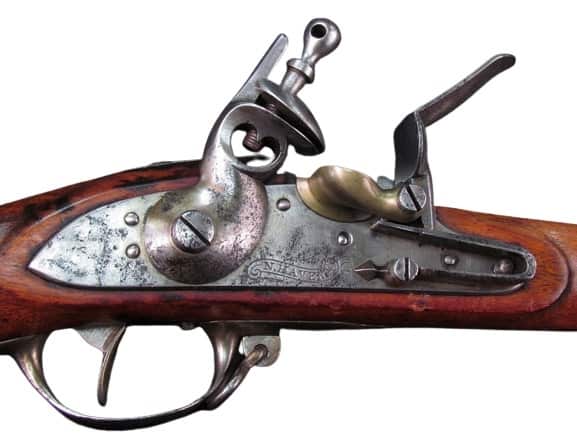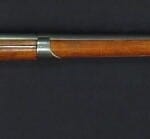
Introduction to the Model 1812 Musket
The U.S. Model 1812 Musket stands as a testament to the evolution of military weaponry in the early 19th century United States. This muzzle-loading, smoothbore musket was a significant step forward in American arms development, serving as a transitional model between the older flintlock design and the later percussion system. Introduced during a period of increasing tension that ultimately culminated in the War of 1812, this musket has become a symbol of the country's early military history.
Origin and Production
The U.S. Model 1812 musket was a .69 caliber smoothbore musket produced by the federal armories in Harpers Ferry, Virginia, and Springfield, Massachusetts. It was the product of the American government's continued push for self-sufficiency in military supplies, a policy that had been largely in place since the Revolutionary War. However, the Model 1812 represented one of the first instances where the U.S. succeeded in manufacturing a large number of quality firearms.
The design was largely based on the French Charleville Model 1777 musket, but with some modifications. Notably, the Model 1812 musket was shorter than its predecessor, the U.S. Model 1795, and its French counterpart. The production began in 1814, towards the end of the War of 1812, and lasted until around 1832, making it the standard U.S. infantry weapon during that period.
Design and Functionality

The Model 1812 was about 58 inches long, with a 42-inch barrel, and weighed around 10 pounds. It utilized the flintlock ignition system, which worked by striking a piece of flint against steel to create a spark that ignited the powder charge. While the flintlock system was reliable and widely used, it was not without its drawbacks. It was highly susceptible to weather, and misfires were common if the powder became damp.
One significant design improvement over its predecessor was the adoption of a more robust and durable lock design. This was accompanied by the inclusion of a reinforced stock, reducing the risk of damage during service.
Service History
Even though the Model 1812 musket came towards the end of the War of 1812, it saw considerable action in various military conflicts. It was widely used during the Mexican-American War (1846-1848), the Seminole Wars, and even the early stages of the American Civil War. Its use during these events highlighted both its strengths and weaknesses, leading to further development and eventual transition to the percussion system.
Legacy
The U.S. Model 1812 musket played a crucial role in the evolution of American military small arms. It represented an important step in American arms production towards self-reliance and in the transition from the flintlock system to the percussion system. The Model 1812 is now a prized artifact for collectors and historians alike, symbolizing a formative era in American military history.
In conclusion, the U.S. Model 1812 was an essential firearm in the early 19th century, showcasing the United States' manufacturing capabilities while serving as a tool for the nation's defense. Its history provides us with a fascinating glimpse into the evolution of military technology during this period.
If you'd like to join forums to discussion this and other muzzleloaders, click here.
The U.S. National Park Service publishes a manual for the safe use and demonstration of flintlock muskets that can be found here.
If you know of any forums or sites that should be referenced on this listing, please let us know here.




